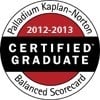Inventory management can feel like a tightrope walk. Too much stock and you're drowning in holding costs and risking obsolescence; too little and you face stockouts, lost sales, and frustrated customers. That's where the "economic order quantity (EOQ)" comes in – a formula that helps pinpoint the sweet spot for ordering inventory.
Balancing these inventory costs is tough, even for established corporations.

In ecommerce, thin margins and long supply chains make it even more critical. Whether it's "economic order quality" or "economic order qty," knowing how to optimize inventory is essential.
What is Economic Order Quantity EOQ?
The economic order quantity minimizes the total cost of inventory by identifying the optimal order size. It tells businesses the ideal number of units to order, reducing overall expenses. Many accounting software programs include these calculations to streamline the process.
Minimizing total costs is a primary goal for many businesses. The EOQ model offers more than just basic inventory management; it provides valuable insights.
The basic EOQ formula focuses on balancing two main costs, and every product has expenses associated with it. Using accounting software, such as SAP, to calculate this figure can significantly reduce overhead costs.
Ordering Costs
These include all expenses related to placing an order, such as staff time for creating purchase orders. It also includes communication with suppliers and handling shipping paperwork.
Generally, the more orders you place, the higher your ordering costs. But keep in mind that smaller individual order sizes mean you'll be ordering more frequently.
Holding Costs
These cover the costs of storing inventory, including warehouse rent, utilities, insurance, and security. Consider the opportunity cost of capital tied up in inventory, plus risks like deterioration or obsolescence.
The larger the inventory on hand, the higher these costs. Lowering the order quantity minimizes this, but increases the risk of ordering too often.
The EOQ Formula and Calculation

The classic EOQ formula is simple. Let's break it down, step-by-step, and then you can apply it using the tools in your system. You can also do this with Excel.
Here's the formula to "calculate economic order quantity":
EOQ = √[(2 * D * S) / H]
Where:
- D = Annual demand in units.
- S = Ordering cost per order.
- H = Holding cost per unit per year.
Let's break that down further.
Finding 'D' – Demand
Your annual demand comes from sales data. Consider planned promotions and seasonality, as demand isn't always uniform.
The economic order quantity can provide purchasing teams with insightful information.
Finding 'S' - Ordering Costs
Calculate the total of all known costs (delivery fees, staff time) divided by the number of annual orders. It's important to consider the entire system when things seem complicated.
Finding 'H' - Holding Costs
This is often trickier to determine accurately. Use storage space costs, insurance on inventory, and the cost of capital tied up. Don't forget about spoilage or obsolescence, especially for stock with a shorter shelf life.
Example Time
A clothing boutique sells 1,000 dresses a year (D). They pay $20 to arrange each order (S), and storage costs are $5 per dress per year (H).
EOQ = √[(2 * 1,000 * $20) / $5] = √8,000 = 89.44
So the EOQ suggests ordering about 89 to 90 dresses at a time.
Importance of Economic Order Quantity
There's major "importance of economic order quantity" beyond just inventory numbers; it influences how an organization views capital. These insights can help minimize holding costs and improve cash flow.
The economic order quantity minimizes the combined cost to order. It does this by considering the total quantity of items to identify the best bulk discounts.
Reduced Carrying Costs
Holding large amounts of excess stock is expensive due to storage, insurance, and potential obsolescence.
Minimized Stockouts
Running out of inventory means lost sales and dissatisfied customers. Accurate forecasting is crucial to ordering enough, but not too much, inventory.
Improved Cash Flow Management
The economic order quantity provides the data needed to fine-tune stock purchasing. The formula helps determine the economic order quantity within the overall context of the business.
Explain the Concept of Economic Order Quantity in Application
EOQ isn't just theoretical; consider it a powerful compass for the economic order quantity system.
Businesses benefit from using the EOQ by ordering less frequently but in larger quantities. The formula may reveal significant inventory savings by analyzing past trends and optimizing reorder points.
EOQ in Action: Real-World Example
Consider an electronics retailer selling a popular wireless earbud brand. They sell about 5,000 units annually (D).
Each order they place incurs costs of roughly $50 (S) for paperwork, staffing, and processing. Storing the earbuds, including stockroom space and insurance, costs about $4 per unit per year (H).
Plugging those values into the formula: EOQ = √[(2 * 5,000 * $50) / $4] = √125,000 ≈ 354 units.
I
n practice, this informs inventory planning, but other factors also play a role:
- Promotional pushes: Marketing campaigns can lead to order increases to accommodate spikes in demand.
- Supplier Minimums: Does the vendor have order quantity requirements that affect the EOQ? This will need to be factored in.
- Perishability: Unlike electronics, food businesses must consider expiration dates, which aren't part of the classic EOQ model.
How To Use It?
Let the calculations guide your decisions, balancing ordering and holding costs.
The Economic Order Quantity Minimizes Inventory Costs and Maximizes ROI
The economic order quantity minimizes expenses, promoting consistent cash flow for operations.
| Benefit | Impact |
|---|---|
| Reduced Holding Costs | Lower expenses for storage space and reduced costs for obsolete inventory. |
| Fewer Stockouts | Meet customer demand, enhancing brand trust and sales. |
| Better Cash Flow | Reduce capital tied up in inventory, freeing up funds for flexible investment. |
| Streamline Reordering | Provides a clear understanding of the optimal order quantity to minimize costs. |
There can be significant economic considerations for holding raw materials, even when the equation works out.
Caveats and Considerations
EOQ is a valuable tool for finding the ideal order quantity, but be aware of its limitations:
- It assumes steady demand, which can be disrupted by promotions or special events.
- It doesn't factor in quantity discounts; a larger order might offer better pricing, altering the optimal quantity.
- It is unaware of any rebates you might be able to get on accumulated order quantities. This is a major source of profit for Wholesale Food distributors.
- If conditions change (e.g., shifts in holding costs), it's worth recalculating the EOQ.
Economic Order Point for Inventory Optimization
EOQ helps organizations meet demand without excessive costs or delays, supporting consistent stock replenishment. It aims to balance customer demand with avoiding surplus inventory.
Combining with Safety Stock
Use "economic order point" systems alongside other methods, such as safety stock, for best results. "Economic order quantity notes" should also include inventory buffers or a contingency planning guide. Do not use EOQ in isolation.
Reorder Point and Safety Stock
Understanding EOQ helps teams establish minimum stock level thresholds. It aims to prevent shortages due to unexpected demand spikes.
FAQs about economic order quantity eoq
What is EOQ and its formula?
The Economic Order Quantity (EOQ) indicates how much of an item an organization should order. It provides insights into the optimal order amount at a given time. The "economic order quantity definition" is: EOQ = √[(2DS)/H], where 'D' is yearly sales, 'S' is the ordering cost, and 'H' is the storage cost.
What is the economic order quantity EOQ procedure?
First, create a forecast and document it. Next, determine the ordering fees and storage costs.
Finally, apply the EOQ formula: EOQ = √[(2DS)/H].
How to calculate EOQ step by step?
First, gather the necessary data ('D', 'S', and 'H'). Then, apply the classic EOQ formula.
Calculate the square root of (2 x D x S), then divide by H. It may be easier for some to *determine eoq* using software with the capabilities.
What is the difference between EOQ and order quantity?
"Order quantity" can refer to any inventory request, which may differ significantly from what the EOQ formula suggests. EOQ provides specific numbers based on ordering and storage costs to minimize overall expenses.
Conclusion
The economic order quantity (EOQ) might seem complex, but it's crucial for businesses aiming to stay competitive. Whether it's in heavy manufacturing, where consistent material ordering is key, or in online startups, EOQ can offer significant benefits.
The EOQ provides information about the optimal order size and timing to lower annual operating fees. By incorporating these insights, organizations can adopt more practical and effective inventory management strategies.
If you've notice you're suffering from frequent stock-outs or spending money on paid Google Ads for product you don't have in stock, it may be time to let an expert SAP consultant take a look at your procurement system settings in SAP.
We are a full-service Hubspot Certified Inbound Marketing and Sales Agency. In addition, we work to integrate your SAP System with Hubspot and Salesforce, where we have a deep delivery capability based on years of experience. We are also a full-service SAP Recruitment Agency, able to deliver the toughest SAP roles to fill. Please our book a meeting service to get started.



